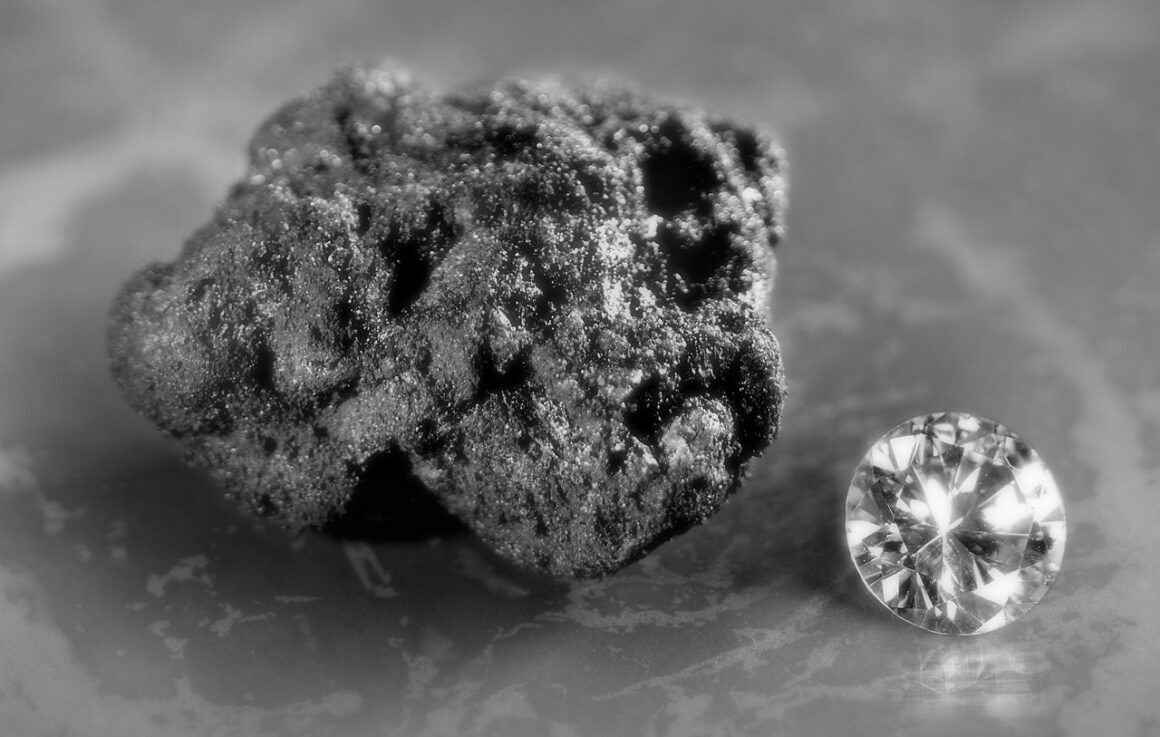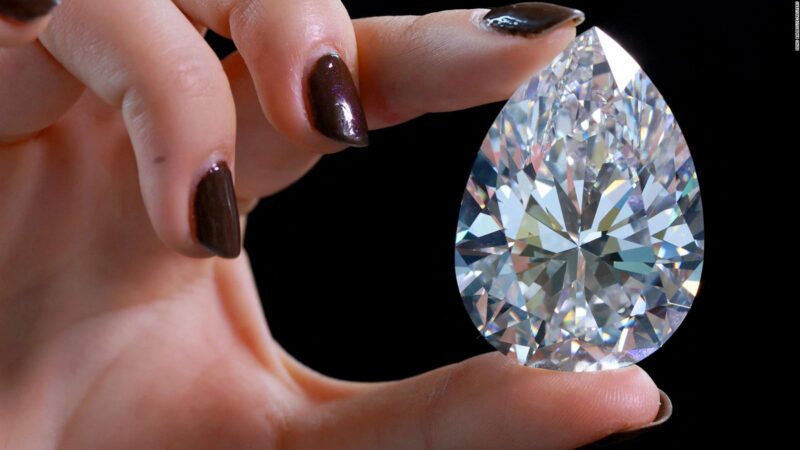The Science of Diamonds is a fascinating exploration into the geological, chemical and physical properties that make up these precious gems.
With their captivating sparkle, diamonds have been coveted by humans for centuries, but what makes them so special? Through the lens of geology, chemistry and physics we can learn about the formation and history of diamonds as well as why they are so sought after.
From understanding how diamond crystals form to exploring their unique optical properties, this article delves deep into the science behind these beautiful stones.
1. The Origins of Diamonds: Geology and Formation Processes

The Science of Diamonds: How Geology, Chemistry, and Physics Come Together to Form These Precious Gems article examines the origins of diamonds. A combination of geology and formation processes are responsible for their creation. Natural diamond deposits can be traced back millions of years ago when carbon-bearing material was subjected to intense heat and pressure deep within the Earth’s crust.
This process causes the carbon atoms to form into a lattice structure that is extremely hard and durable, which leads to the formation of diamonds. Over time, these precious gems are pushed up towards surface through volcanic eruptions or other geological events.
The chemical makeup also plays an important role in determining the properties such as color, clarity, hardness and size as well as its overall value.
Finally, physics comes into play when evaluating how light reflects off each diamond’s facets in order to determine its brilliance and sparkle factor—two key aspects buyers consider when choosing a gemstone for their jewelry collection!
2. Chemistry of Diamonds: Structure and Properties
The Science of Diamonds: How Geology, Chemistry and Physics Come Together to Form These Precious Gems is an informative article that dives into the chemistry behind diamonds.
It explains how diamond formation requires a combination of geological, chemical and physical factors to produce the gemstones we know today. The article focuses on the structure and properties of diamonds which include their hardness, thermal conductivity, optical dispersion and more.
It also discusses how each element in a diamond’s makeup contributes to its desirable characteristics. By understanding the science behind these precious gems, readers can gain insight into why they are so sought after for jewelry making.
3. Different Varieties of Diamonds

Different varieties of diamonds exist, each with its own unique features and characteristics. The four common types are: natural mined diamonds, lab-grown diamonds, diamond simulants and synthetic diamonds.
Natural mined diamonds and moissanite diamond are the most traditional types of diamonds; they are formed naturally over millions of years in Earth’s mantle and crust through a combination of heat and pressure.
Lab-grown or cultured diamonds, on the other hand, undergo an accelerated formation process created by humans in a laboratory setting using advanced technology such as HPHT or CVD methods to replicate the natural conditions found deep within Earth’s mantle.
Diamond simulants look similar to real diamonds but lack their physical properties; they can be made from materials like cubic zirconia or moissanite, which cost far less than genuine gemstones yet still offer some sparkle for jewelry makers on a budget!
Finally, synthetic diamonds have all the same chemical properties as authentic gems but are created entirely by human engineering instead of through geological processes; these man-made stones prove just how powerful science can be when it comes to crafting beautiful jewelry pieces!
4. Physics Behind the Brilliance: Light Interaction with Diamonds
The science behind diamonds is fascinating and complex. Light interaction with diamonds is a key component in their brilliance.
When light enters the diamond, it refracts off of its many facets to create a sparkle thats simply unmatched by any other gemstone. The physics of light interaction with diamonds can be broken down into two main categories: reflection and refraction.
Reflection occurs when light bounces off the surface of the diamond, while refraction happens when light passes through the diamond and bends towards different directions due to changes in density within the stones crystal structure.
This process creates an array of spectral colors which give life to each individual diamond’s unique beauty. In addition, because diamonds possess great hardness they are able to cut or polish very well allowing them to shine even brighter under intense lighting conditions such as those in jewelry stores or on stage at red carpet events!
5. Current Uses for Diamonds in Science, Technology, and Jewelry
:max_bytes(150000):strip_icc()/engagement-rings-roundup_0-da516d5ac1384e20ae61bbff023a02cc.jpg)
The Science of Diamonds is a fascinating topic that combines geology, chemistry, and physics to form these precious gems. Diamonds have been treasured for centuries as symbols of love and beauty, but they also have modern scientific applications in a variety of fields.
For example, diamonds are used in the field of optics to create lenses with superior light transmission properties; this allows them to be used in high-end optical instruments like microscopes and telescopes. They can also be utilized for various industrial uses due to their extreme hardness which allows them to cut through materials such as glass or metal more efficiently than other tools.
Additionally, diamonds are increasingly being used for medical purposes because their unique structure makes them ideal for use in implants and prosthetics. Finally, diamond jewelry remains popular today because it combines elegance and luxury with practicality – an impressive feat indeed!
Conclusion
The Conclusion of this article on the Science of Diamonds is a summary of the data and findings presented. It explains how geology, chemistry, and physics come together to form these beautiful and precious gems. The article also provides an overview of diamond mining processes as well as some interesting facts about diamonds in general.
By understanding the science behind diamonds, readers can better appreciate their unique characteristics and value. Furthermore, it has been suggested that more research needs to be conducted into the formation process of diamonds in order to further understand their structure and properties.


